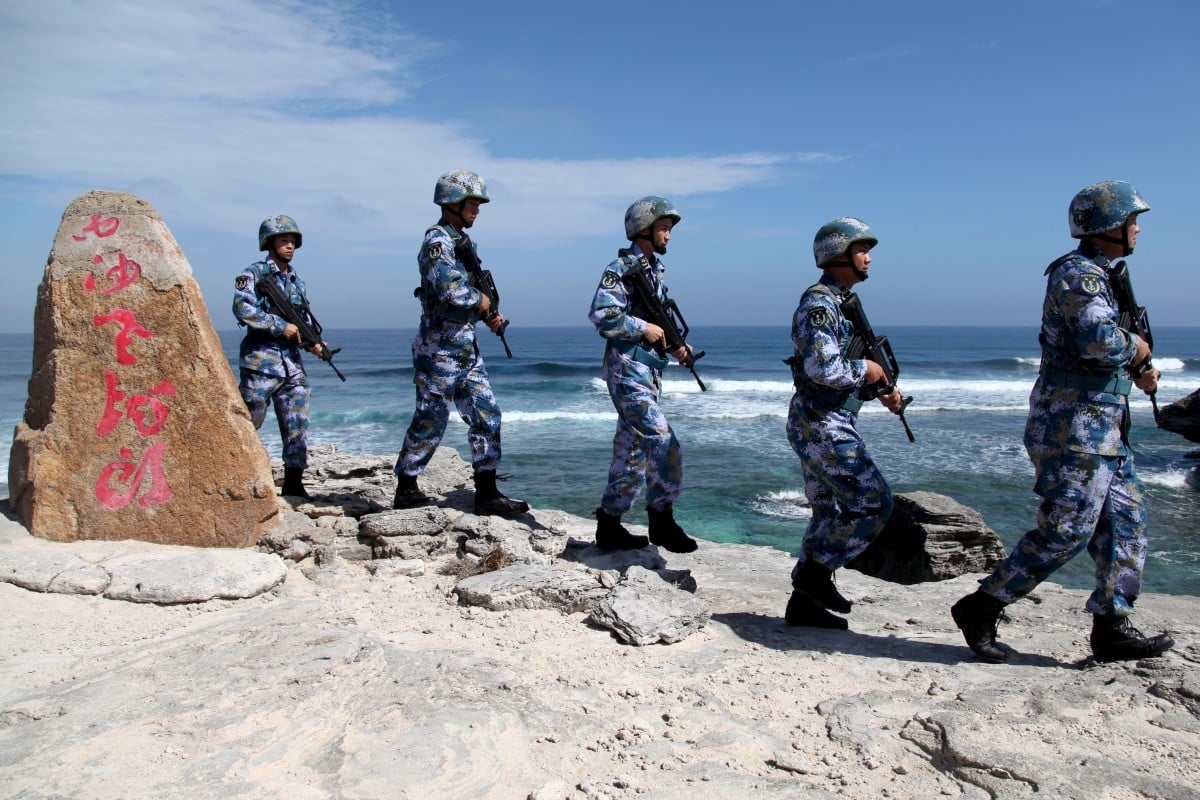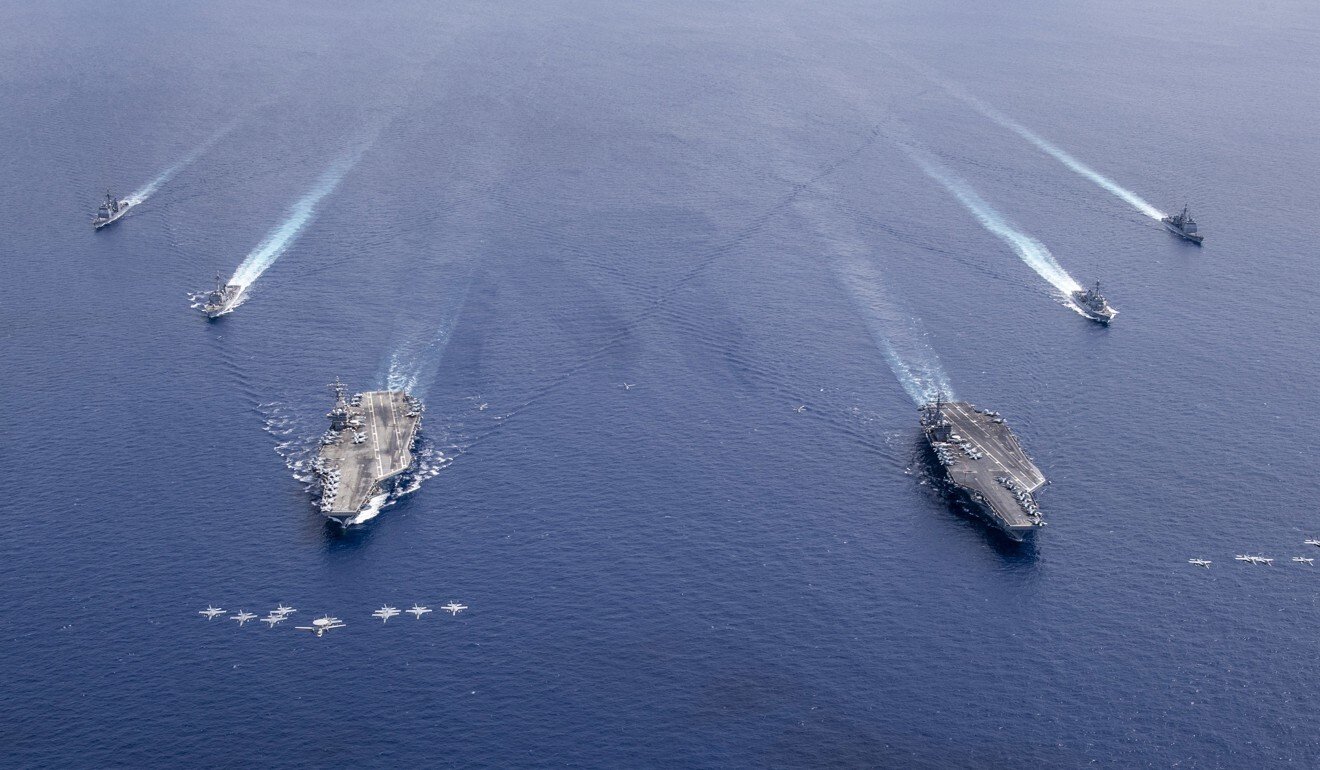
The US rejected all Chinese claims beyond the 12-nautical mile territorial area around the Spratly Islands, citing in particular the waters surrounding Vanguard Bank off Vietnam, Luconia Shoals of Malaysia, the area within Brunei’s exclusive economic zone, and Natuna Besar of Indonesia. The statement also said China’s claims over the submerged feature James Shoal near Malaysia were unlawful.
“We are making clear: Beijing’s claims to offshore resources across most of the South China Sea are completely unlawful, as is its campaign of bullying to control them,” Pompeo said in the statement.
“The world will not allow Beijing to treat the South China Sea as its maritime empire.”

Chinese foreign ministry spokesman Zhao Lijian called the US challenge “groundless” and an effort by Washington to sow discord between Beijing and Southeast Asian nations, which he said would fail.
The US rejected all Chinese claims beyond the 12-nautical mile territorial area around the Spratly Islands, citing in particular the waters surrounding Vanguard Bank off Vietnam, Luconia Shoals of Malaysia, the area within Brunei’s exclusive economic zone, and Natuna Besar of Indonesia. The statement also said China’s claims over the submerged feature James Shoal near Malaysia were unlawful.
“We are making clear: Beijing’s claims to offshore resources across most of the South China Sea are completely unlawful, as is its campaign of bullying to control them,” Pompeo said in the statement.
“The world will not allow Beijing to treat the South China Sea as its maritime empire.”

Chinese foreign ministry spokesman Zhao Lijian called the US challenge “groundless” and an effort by Washington to sow discord between Beijing and Southeast Asian nations, which he said would fail.
“China is not seeking to become a maritime empire. China treats its neighbouring nations on an equal basis and exercises the greatest restraint,” Zhao said on Tuesday.
He said the US was the destabilising factor in the South China Sea, as it constantly sent naval vessels to its waters, even though it was not a claimant state.
The administration of Barack Obama opposed Beijing’s claims after the 2016 ruling and pressed China to stop its land reclamation at Scarborough Shoal. But Pompeo’s statement was the first time the US has openly rejected Beijing’s claims in the strategic waterway, through which US$5 trillion in global shipping trade passes annually.
Chen Xiangmiao, an assistant research fellow with Hainan-based think tank the National Institute for South China Sea Studies, said Pompeo’s remarks signalled that the US had chosen a side.
“The US position is very clear,” Chen said. “If we used to say that the US didn’t take sides over sovereignty disputes, now this statement has denied China’s territorial claims, which means that the contest between China and the US over the South China Sea is close to a new Cold War.”

Zhang Mingliang, a South China Sea expert with Jinan University in Guangzhou, said acrimony between China and the US over the waterway and their increasing military activities in the region had taken tensions “to an unprecedentedly high level”.
“The confrontation and game-playing surrounding the South China Sea is worse than elsewhere,” Zhang said.
Collin Koh, a research fellow with the S. Rajaratnam School of International Studies at Nanyang Technological University in Singapore, said Beijing may step up measures to challenge US military activities in the contested waters.
“This could potentially result in a heightened risk of incidents – even if not premeditated, but inadvertent in nature – in the South China Sea that could raise tensions and inflame the situation,” he said.
In the statement, Pompeo said the US “stands with our Southeast Asian allies and partners in protecting their sovereign rights to offshore resources” – a remark Chen from the Hainan think tank said hit a raw nerve for China.
The South China Sea accounts for about 12 per cent of the global fish catch, feeding tens of millions of people in the region. It is also rich in energy resources, with an estimated 11 billion barrels of untapped oil and 190 trillion cubic feet of natural gas. China has territorial disputes over the waterway with Vietnam, the Philippines, Taiwan, Malaysia and Brunei.
Tensions over energy exploration have run high since last year, when the Chinese and Vietnamese coastguards were locked in a stand-off for months over oil activities near Vanguard Bank, a reef in the disputed Spratly Islands.
China also sent coastguard vessels to waters near Luconia Breakers, a reef cluster at the southern end of the Spratlys, in May last year, as Malaysian oil and gas exploration was under way, according to the Asia Maritime Transparency Initiative (AMTI) under the Centre for Strategic and International Studies.
There have also been skirmishes over fishing rights between claimants and Indonesia, a non-claimant whose exclusive economic zone near the Natuna islands overlaps with China’s nine-dash line.
“While China is talking about dialogue and cooperation, disputes over resource exploration remain deep and continue to intensify,” Chen said. “If these disputes escalate into conflict, the US may have an opportunity to step in.”


No comments:
Post a Comment